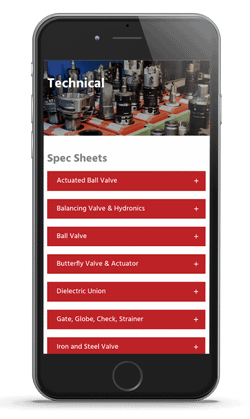Plumbing Valve Types | A Water Valve Selection Guide
Comments Off on Plumbing Valve Types | A Water Valve Selection GuideWater valves perform a range of functions for plumbing systems in consumer kitchens and bathrooms as well as large-scale industrial processing and distribution systems. Plumbing valves control water flow and direction, maintain or change pressure, and shut off water in the event of an emergency. They are also made of different materials depending on whether they are used for potable or non-potable water.
To help you determine the right type of valve for your water system, we put together this guide explaining the features of the most common types of valves in plumbing.
Choosing the Right Water Valve Type for Your Plumbing Needs
When you’re choosing a water valve, consider the following factors of your application:
- The type of fluid, such as potable water or wastewater
- The anticipated flow rate, as well as the maximum and minimum flow rate
- Fluid pressure, which impacts the type of material the valve can be
- The type of connection in the adjacent piping or equipment
- Regulations for your industry and facility
Start by addressing the valve’s intended function, and consider whether one of these eight most common types of water valves fits your application.
Ball Valve
Ball valves feature an interior ball mechanism with a hole in it. As the valve is rotated, the opening becomes smaller or larger to control the flow of fluid. These water valves offer cost-effective operation, low maintenance, and convenience. However, they can become blocked or obstructed over time, especially in hard water environments.
Butterfly Valve
These water valves have an internal rotating disc that creates a tight seal. With each quarter turn, the disc rotates to open or shut off fluid flow. Butterfly valves are simple, easy to maintain, and can offer bi-directional flow control. However, butterfly valves can result in pressure drops since the rotating disc is always in the valve’s flow line.
Check Valve
A check valve is a one-way valve that prevents the flow of fluid from going backward. They protect upstream fluid lines from contamination, vital in applications such as food processing and chemical processing. They can also prevent water hammer from damaging sensitive upstream components.
Gate Valve
Gate valves have a flat disc-like mechanism that raises (open position) and lowers (closed position) to allow or stop the flow of water. They are very common in older water systems, and they can accommodate high-pressure levels and large flow rates without causing water hammer. However, they take up more space than other flow control valves, are relatively slow to open and close, and may erode over time with frequent use.
Globe Valve
These are cylindrical water valves that have two globular halves that interrupt or allow fluid passage. They can be used to throttle flow with precision, even under high pressure. However, they may result in higher pressure drops than those seen with other valves.
Stop Valve
Stop valves, or shut-off valves, are simple valves that are typically in the open position. Operators can rotate them closed as needed. They typically attach to water fixtures like sinks and toilets for a convenient shut-off option during maintenance or an emergency.
Hose Bibbs
Hose bibbs are outdoor spigots that facilitate flow from inside to outside a structure, usually a home. They usually have a threaded pipe for connection with garden hoses. Hose bibbs typically aren’t built for extreme pressure levels.
Boiler Drains
Boiler drains remove sediment, water, and other buildup from boilers to optimize system efficiency. These water valves have a hose end connection and must comply with boiler manufacturer regulations.
High-Quality Plumbing Valves from RED-WHITE VALVE CORP.
At RED-WHITE VALVE CORP., we manufacture high-quality, industry-leading water valves to fulfill our customers’ critical requirements. We manufacture all products in-house with cutting-edge production processes, allowing us to provide unmatched quality, long service life, and competitive prices.
Explore our highlighted water valve products for plumbing applications:
-
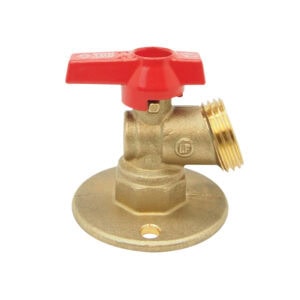 View Details
View DetailsRW-255ABF LF Brass Quarter Turn Sillcock with Flange
$59,345,792,292.00 Add to cart -
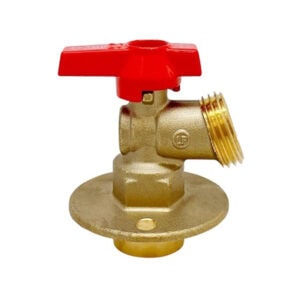 View Details
View DetailsRW-275ABF LF Brass Quarter Turn Sillcock with Flange
$59,345,792,292.00 Add to cart -
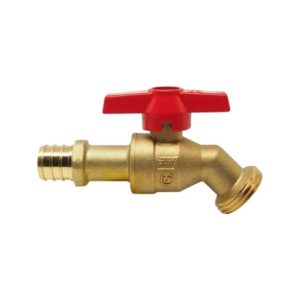 View Details
View DetailsRW-316AB LF Ball Valve Hose Bibb
$59,345,792,292.00 Add to cart -
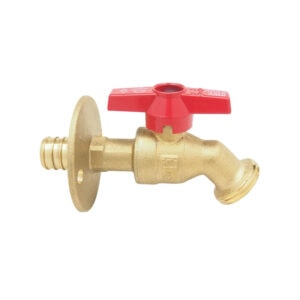 View Details
View DetailsRW-316ABF LF Ball Valve PEX Hose Bibb with Flange
$59,345,792,292.00 Add to cart
Contact Our Valve Experts to Discuss Your Plumbing Project
At RED-WHITE VALVE CORP., we supply our clients with high-quality valves that meet tight tolerances, comply with stringent regulations, and endure extreme work requirements. Contact us today to learn more about our available products or for expert assistance in choosing the right water valve. You can also request a quote for pricing details.
HVAC Valves Guide – Types, Uses, Benefits
Comments Off on HVAC Valves Guide – Types, Uses, BenefitsIndustrial HVAC systems rely on valves for regulating temperature, flow rates, and pressure levels. It’s important to select the right one for your given application and function.
In this guide, you’ll learn about the different types of HVAC valves, their potential applications, and how to select the ideal valves for your HVAC system.
HVAC Valve Types
Choose from multiple valve types for HVAC applications, including:
Ball Valves
Ball valves feature a ball with a hole in its center that controls the flow of liquids. The quarter-turn of a handle either opens or closes the hole.
Common uses for ball valves include:
- Separating equipment to prepare for maintenance
- Chilled or hot water loop controls
- Air handling units
The following are some specific benefits of ball valves:
- A simple design that reduces maintenance requirements
- Minimal pressure drop using a full bore flow
- Complete cessation of flow through a tight shutoff
Butterfly Valves
These cost-effective and lightweight valve designs feature a rotating disc placed on a central axis, allowing operators to regulate liquid flow. However, these valves’ sealing designs may allow for leakage and limit the valve’s pressure tolerance.
Butterfly valves have common uses in the following applications:
- Isolation dampers
- Air handling units that don’t require tight shutoff systems
- Ventilation systems
Butterfly valves offer certain key benefits, such as:
- Cost-effectiveness
- Lightweight nature
- Easy installation
- Partial flow regulation
- Reliable on/off flow control
Gate Valves
If your application requires complete shutoff, you may benefit from gate valves. These valves operate using a sliding wedge that you can either raise or lower to regulate liquid flow.
While these solutions are ideal for applications where tight shutoff is a critical requirement, they offer limited throttling control and a general design that can result in pressure drops.
Applications for gate valves can include:
- Boiler control lines
- Separating pumps from equipment for maintenance
Gate valves offer the following benefits:
- Dependable on/off flow control
- Visual indicators of open and closed positions
Globe Valves
These valves allow for liquid flow regulation. Their internal components enable operators to open the valve to varying degrees for precision control.
Their throttling capabilities make them ideal for applications requiring precise control of liquid flow.
Potential uses for globe valves include:
- Bypass lines for equipment liquid flow control
- Steam flow and pressure regulation
These valves also come with the following benefits:
- A range of body materials based on liquid type
- Precision throttling and flow control
Check Valves
You may use a check valve to prevent backflow in systems, as they feature a design that allows for flow in a single direction. There are different types of check valves, including:
- swing check valves that use an internal disc to moderate liquid flow based on pressure levels
- wafer check valves that use two folded retractable discs that prevent backflow
- lift check valves that operate similarly to globe valves using internal seating and guided disc components
Applications for these valves could include pump protection lines to keep liquids flowing in one direction or water lines in condensers requiring backflow prevention.
Benefits of check valves include:
- Protection of equipment from damage
- Prevented backflow through automated regulation
Multiple valve types are available depending on installation and pressure level requirements.
Balancing Valves
If you operate a hydronic system, you may want to use specialty balancing valves for flow control. These valves work by maintaining a hydraulic balance in HVAC systems, regulating both pressure and flow for increased efficiency and overall performance.
Hydronic Valves
These specialty valves (such as our 8000 Series) are ideal for hydraulic separation, purging, and filling for use in expansion tanks and other components in hydronic systems. They facilitate the even distribution of heated or chilled water to system terminals independent of operating conditions.
Selecting the Right Valve for Your Industrial HVAC System
When choosing the ideal industrial HVAC valves, take the following into account:
- Pipe compatibility and size
- Temperature and pressure specifications
- Budgetary limitations
- Throttling, on/off, or other control requirements
- Maintenance needs and staff accessibility
Red-White Valve: Your Partner in Industrial HVAC Valve Solutions
If you need high-quality valves for your HVAC system, Red-White Valve Corp. manufactures some of the best solutions. These include a vast array of highly corrosion-resistant coil kit components such as:
- Pressure-independent control valves
- Automatic balancing valves
- Fixed-orifice manual balancing valves
- Unions
- Combination strainers
- Stainless steel hoses
One of our standout products is our 8000 Series Hydronic Installation Valve, a balancing valve that features corrosion-resistant DZR brass alloy construction, PTFE seating, and blow-out-proof stems to optimize performance in hydronic systems. These are ideal for use in HVAC, water return, and heat exchanger systems, facilitating efficient flow.
Using our hydronic valves, you can maintain comfortable temperatures in facilities with a cost-effective solution.
Contact Our Specialists for Your HVAC Valve Needs
Seeking balancing valves and other valve types for your HVAC equipment? Turn to the experts at Red-White Valve Corp. for help finding the right product.
Contact us today or request a quote for more information about our offerings.



